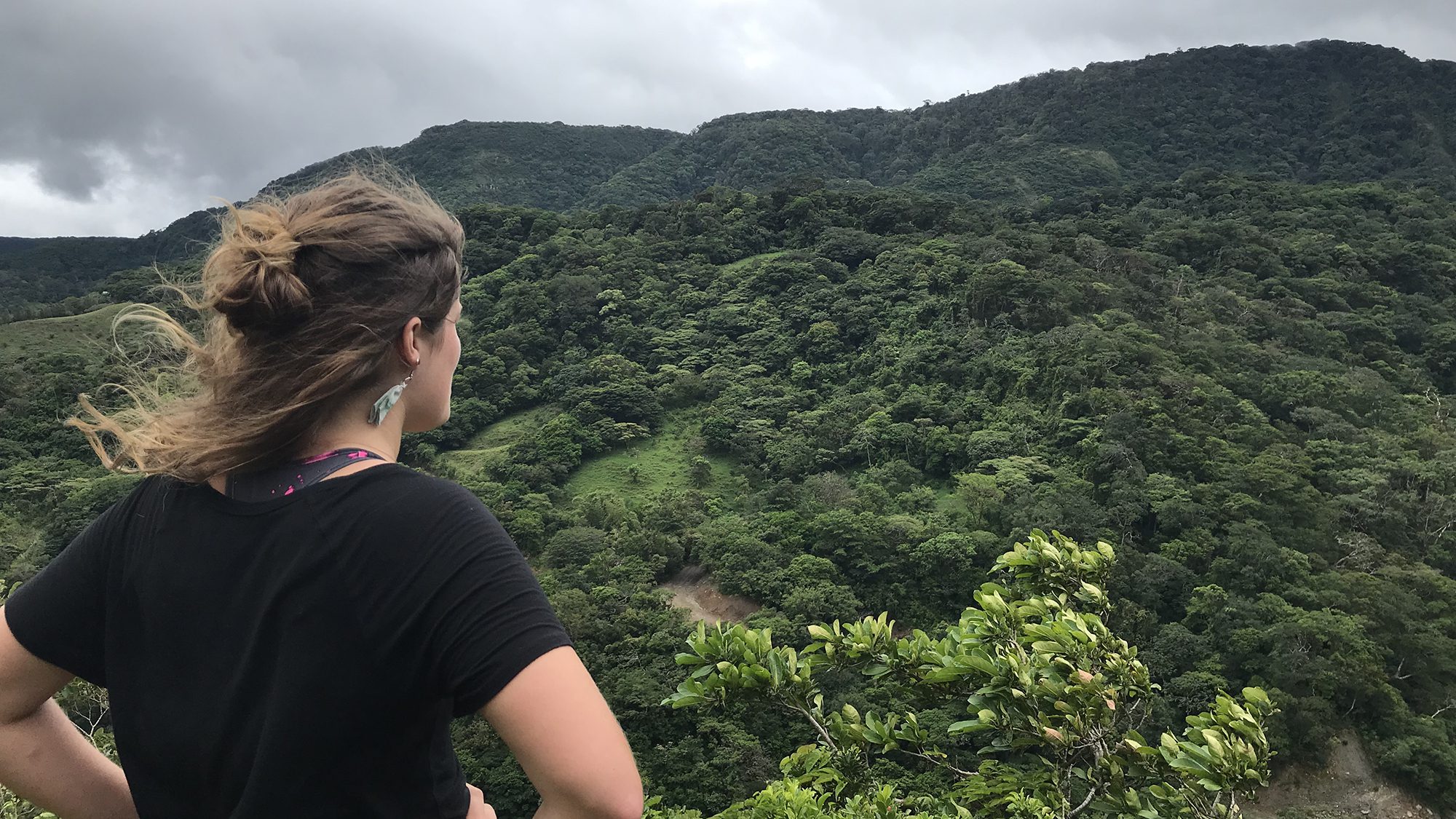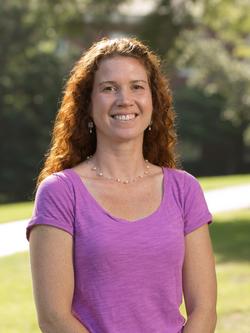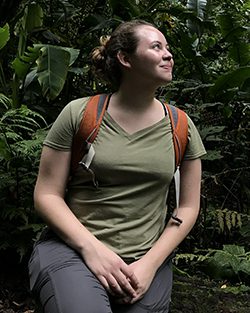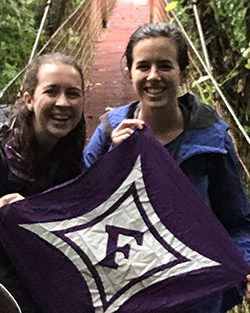How connecting local organizations can aid conservation

Over two summer research trips to Costa Rica, a Furman professor and her students got the opportunity to study the successes and challenges of landscape-scale conservation efforts up close.

Karen Allen
Their research found key insights into the importance of connections between grassroots organizations working toward a common goal – as well as the difficulty of making those connections across a fragmented landscape.
During the summers of 2018 and 2019, Karen Allen, an assistant professor of sustainability science and anthropology, and students Sophia Pessagno ’19 and Sarah McLean ’20 researched how local conservation organizations can join forces to address issues on a broader scale. Their findings are summed up in “Connecting Communities, Connecting Environments: The Role of Social Capital in Landscape-Scale Conservatism,” which has been accepted for publication in the journal Society & Natural Resources. The article was published online on June 7 but has not yet appeared in the journal’s print edition.
“Landscape-level conservation initiatives typically need to connect a diverse group of stakeholders to achieve conservation goals,” states the article’s abstract. “This requires an understanding of the role that social capital plays in leveraging conservation across scales.”
The landscape in question was the Bellbird Biological Corridor (Corredor Biológico Pájaro Campana, or CBPC), 667 square kilometers on the Pacific coast of Costa Rica, established in 2009. From Monteverde, which contains the Monteverde Cloud Forest Biological Preserve, the corridor stretches southwest along the Gulf of Nicoya.
‘We are part of this system’
Allen began researching the region as graduate student, and she has brought her Furman students back regularly for summer research projects.

Sophia Pessagno ’19 during her summer 2018 research trip to Costa Rica
Connections are critical in the CBPC, Allen said – not just among organizations, but between different local areas. The CBPC was envisioned to protect a vulnerable species, the three-wattled bellbird, whose habitat encompasses several fragments of land – many of which are privately owned – across that region of Costa Rica, she said.
During a summer research project in Costa Rica in 2018, her student Pessagno started interviewing some of the organizations in the corridor, asking how – or if – they were working together and joining forces to meet the CBPC’s original goals. The sustainability science major saw her research as an extension of the principles she had been learning on campus.
“When I saw what Dr. Allen was working on, it brought human beings into the picture, which was very much what my classes taught: We are part of this system,” she said. “I really loved that I was able to connect people and communities and realize how the whole came together.”
Mapping the networks
Although much has been accomplished in the CBPC, the grassroots organizations were not connecting well, Pessagno found. For example, a large organization in Monteverde that wanted to plant trees might have difficulty connecting with the small, isolated areas elsewhere in the corridor where trees were needed. Pessagno’s thesis hypothesized that there was a geographical disconnect at work.

Sarah McLean ’20 (right) and Eileen Joseph ’20 during a summer 2019 research trip to Costa Rica
A social network analysis, using survey data from the organizations to map our their connections, could prove that hypothesis. In summer 2019, another sustainability sciences major, Sarah McLean, took on that task.
“The survey asked people who they’re working with, how they’re working with them, why they’re working with them, and how strong that connection is,” said Allen.
McLean was then able to translate that survey data using software to mathematically measure the networks’ weaknesses and strengths.
“Quantification of human relationships is inherently difficult, but that’s exactly what social network analysis attempts to do,” she said. “I was surprised at how well my social network analysis revealed important patterns that are affecting conservation outcomes.”
The data showed “a sparse yet highly centralized network that isolates key actors from decision-making and places an extensive financial and resource burden on the central institutions,” concluded the article. The strongest connections found in the Monteverde region, while organizations in outlying areas to the south were less well connected. The fact that organizations tended to be “plugged into Monteverde” rather than connected laterally with each other was “not terribly surprising,” the article stated, given the prominence of Monteverde among tourists and conservationists.
A strengthened network of geographically dispersed key stakeholders can help bridge local conservation initiatives, concluded the article’s authors, who hope that their work will encourage further research toward that goal.
The work continues
Thesis work gave McLean and Pessagno practical experience in project ownership – taking a project from concept through data to synthesis – which will help them in any pursuit, said Allen.
“Often, when I’m asked to write reference letters, I can say, ‘Hey, they did our thesis program. They’re ready to work in any field,’” she said.
It definitely helped McLean in her field, the alum said. She has applied what she learned in Costa Rica about involving local communities in conservation efforts as a deputy project manager for Arizona-based environmental consulting agency Galileo Project LLC. McLean’s work revolves around the National Environmental Policy Act (NEPA), which requires federal agencies to communicate with the public about the potential environmental effects of their proposed actions.
“According to both my research and NEPA, participation of the public and local communities is critical to environmental work and conservation,” McLean said, “and I have seen those processes play out in different and interesting ways because of these experiences.”
Pessagno said that studying the CBPC helped her find her career path as well.
“I realized that I fell in love with getting people connected to other people and the resources they needed,” she said.
Pessagno pursues that passion in her current job as programs and communications coordinator for the Southeast Climate Energy and Energy Network, “creating resources and linking people together to do the projects and initiatives that everyone wants to do.”
Having her name on journal article has other benefits for a young professional, Pessagno said.
“The environmental field is dominated by individuals who have been in their careers for many, many years,” she said. “So having that experience under my belt definitely helps me project my voice just a little louder.”